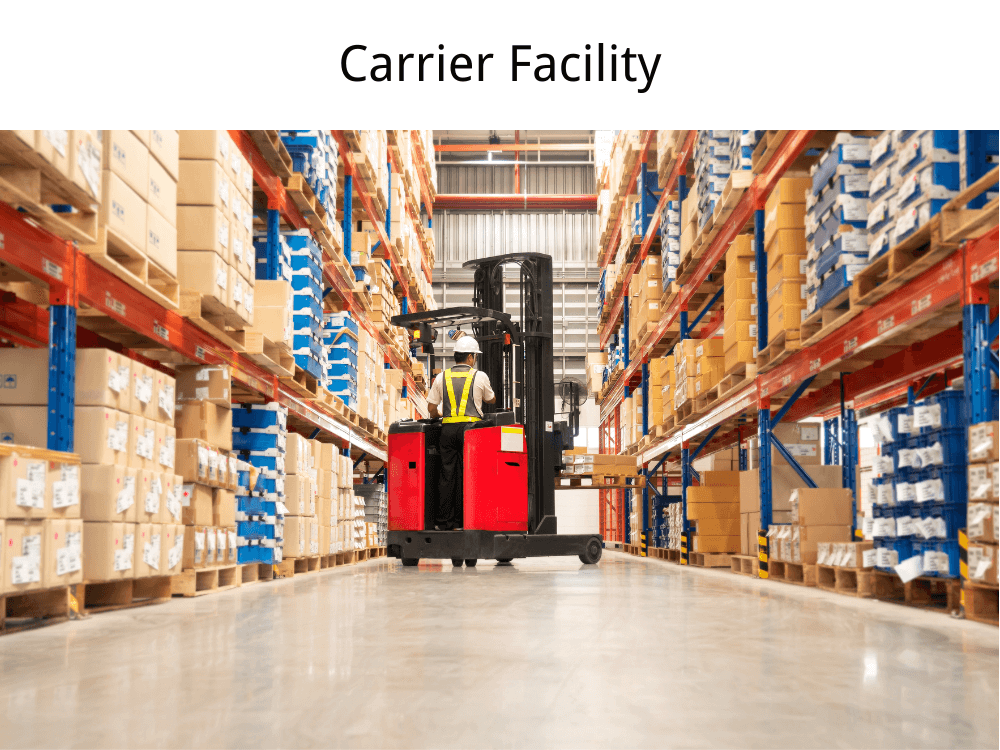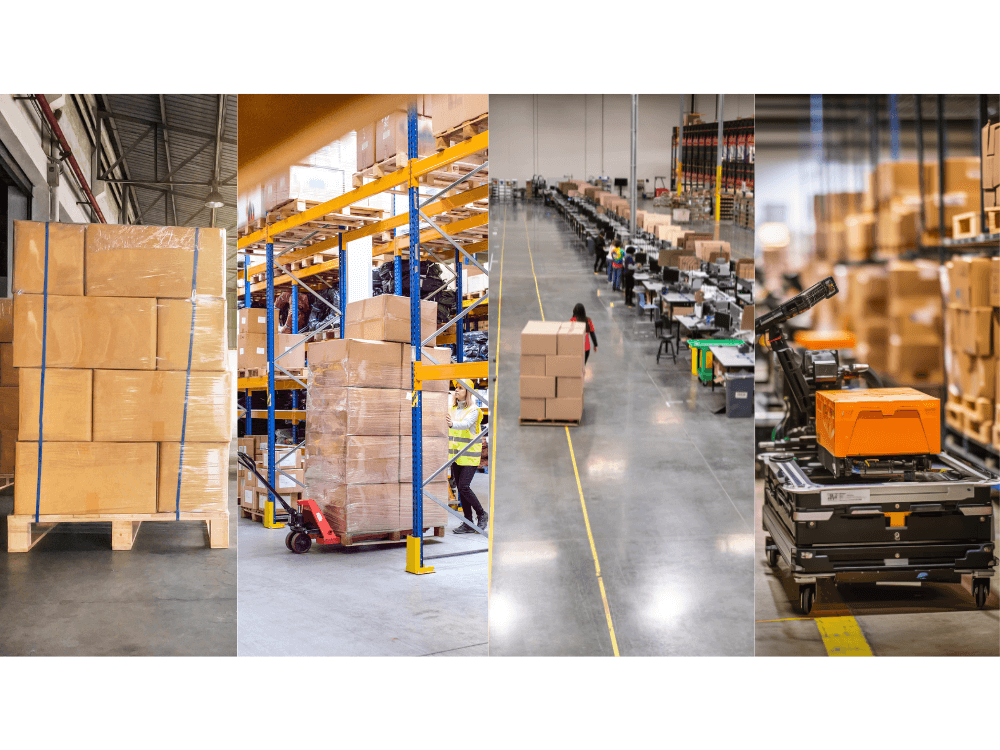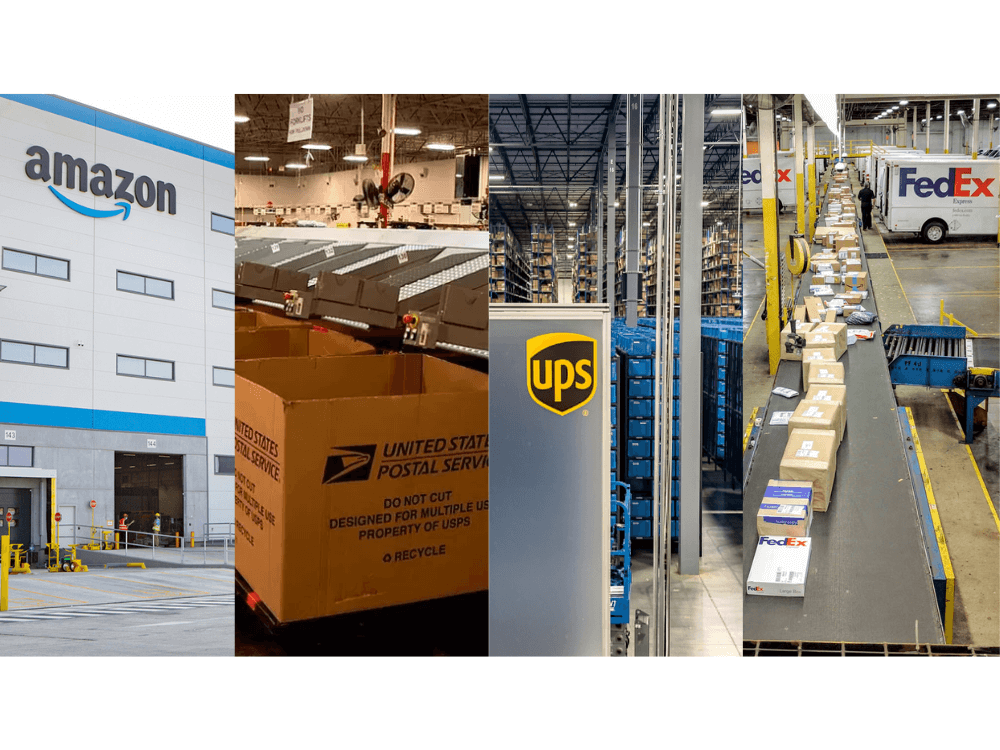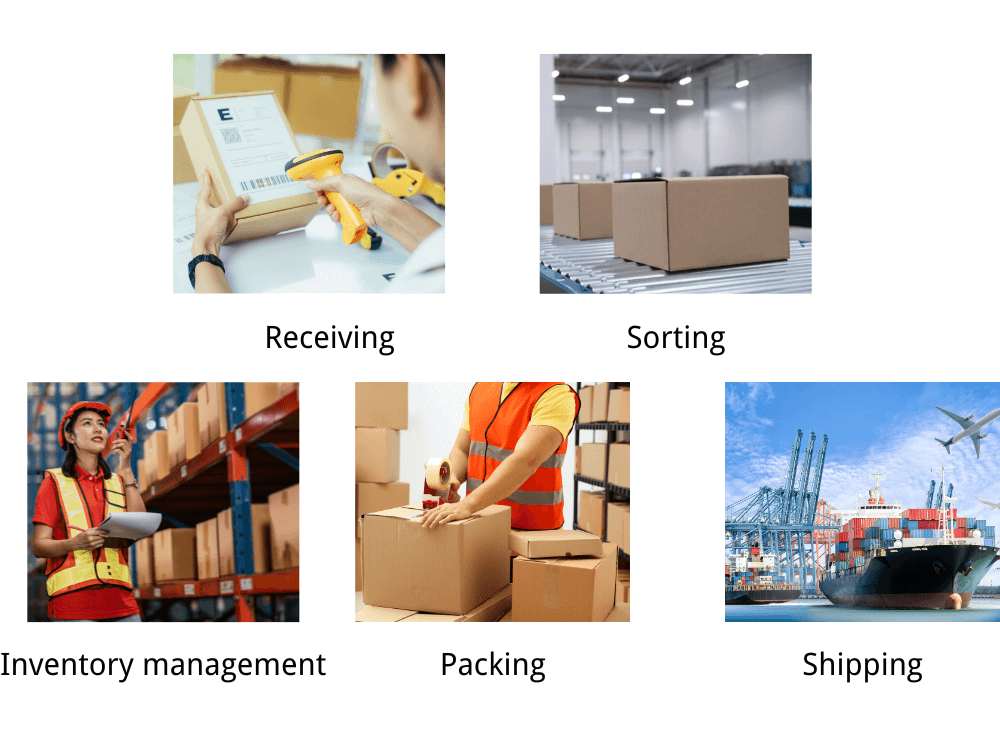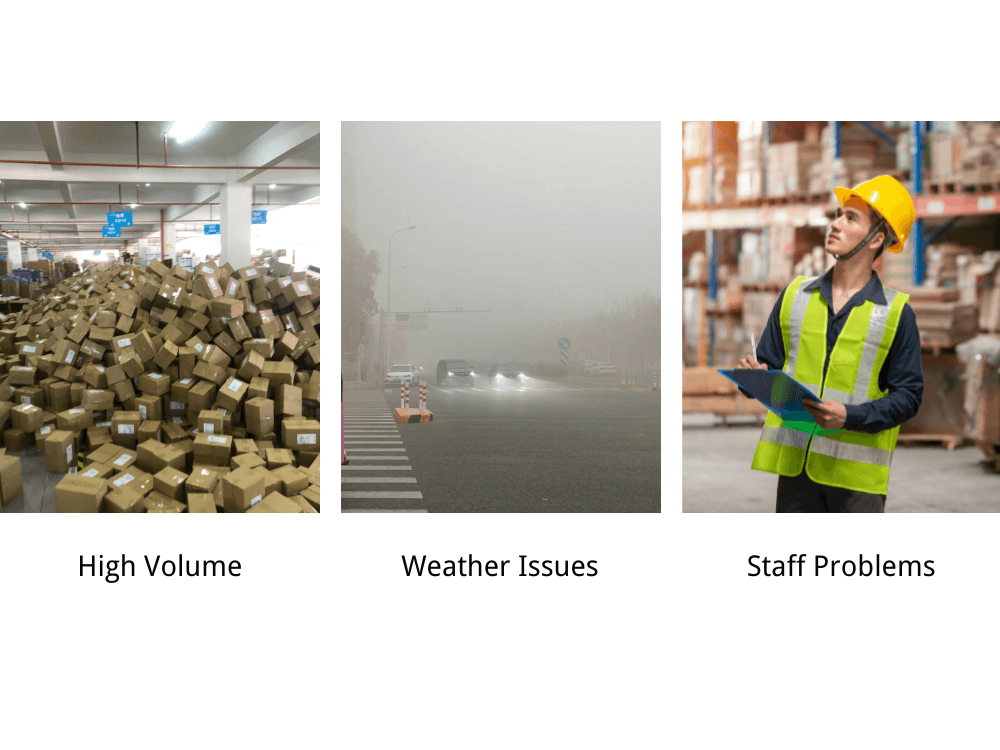Your Strategic Partner for
Unlocking China's Sourcing Potential
What is a Carrier Facility?
Introduction
How long have you shipped orders?
Shipping seems to be one step that occurs from the suppliers to buyers. But deep down the facts, it has a complex of order processing through multiple stations.
Suppliers hire shipping agents and utilize them to pick and pack from the warehouses. It doesn’t end here.
Instead, the shipping agents process orders through warehouses. They also feature all the barcode facilities.
Today, we will explore the shipping orders from suppliers to carrier facilities. We will also know the challenges the carrier facilities face with some examples.
Chapter 1: What is a Carrier Facility?
Definition
A carrier facility is where the shipping carriers store their products. After storage, products get shipped to their final destination.
Carrier Facility can have an A to Z system for the products. For example:
- Storage space. It is not only the storage space needed but also the inspection area and sorting space. Most carrier facilities have their particular processing space and confirm the order processing.
-
Equipment. A long list of equipment is essential to tackle the sorting issues. From unloading tools to storing the products, it is necessary. The carrier facility can have the tools, such as trucks, for the final delivery.
- Latest technology. Computers, scanners, and processing software are elements of the carrier facility. They streamline the orders. Keep the records of every day and provide seamless info. Update processing, leaving, or delayed shipping of the orders.
- Workers. Sufficient staff availability is necessary. It handles, unloads, and stores the products on the shelves.
Role of carriers in shipping/logistics
Carriers are the pivot in inventory management and the shipping industry. Consider them as your decision-makers. It is because a shipping company defines its routes. Ship the products to the destination.
Some shipping carriers have multiple warehouses in each city. They ship products from one warehouse to another. The process repeats until all products get removed from one carrier facility.
Once the product is in the carrier facility, the final processing occurs to the buyers.
Therefore, the role of the carriers can be exceptional in managing the orders. They also provide the route to the buyers for the final delivery.
What is the purpose of a carrier facility?
Carrier facility tackles many critical situations and provides a smooth track to success. If you need to know the fundamental purpose, know the following aspects.
- Storage and inventory management. The foremost purpose of the carrier facility is to store the products. Whether for one day or a week, the inventory management must be outstanding. It must manage the products efficiently.
- Sorting and consolidation. Orders from multiple locations to a single buyer get packed as a single. Such a consolidation service saves additional expenses. Also, reduce the financial burdens on the buyers. Moreover, the final location determination occurs in this step. It leads to better processing of the orders.
-
Distribution. Usually, carrier facilities are more like a home to the products. Before the products get delivered to retailers, it concludes with the location definition. The shipping company picks up the order to the final destination.
- Efficiency and cost reduction. What do you infer from the whole discussion? Indeed, the sole purpose is to optimize the shipping costs. Moreover, slash the additional fees as soon as possible.
Chapter 2: Types of Carrier Facilities
Carrier facilities can be anywhere around the globe. What matters is the processing of inventory and the definition of the orders.
Four key types of carrier facilities handle all the matters in all such cases.
Sorting Centers
Sorting centers are places where your orders are defined based on the destination. Simply put, it is a short-term place of inventory storage. The shipping team removes the packages in a short period.
The functions of the sorting center are to:
- Receive the parcels from multiple sellers.
- Store them and define their destination for the final shipping.
- Rerouting parcels to their original destination.
The automated technology works with the manual workers to optimize efficiency.
● Distribution Centers
The name of distribution centers highlights what exactly they do. The role of a distribution center is to receive the products and ship them to the customers or retailers.
Here is how it executes the whole task.
- Receive products from the suppliers, sellers, or shipping agents.
- Pick, pack, and finally dispatch them to the customers, retailers, or buyers who need the item.
Distribution centers are not like warehouses for inventory storage. They keep the products until the delivery agent delivers them to the buyers.
● Fulfillment Centers
Fulfillment centers are often around the buyers and relevant locations. They play a crucial role in the order fulfillment. Usually, in eCommerce fulfillment, they play out as a one-stop solution.
That means:
- Fulfillment centers receive the products from the suppliers.
- Pick, pack, and process them through their system for the final shipping.
- The delivery company delivers the parcels to the buyers.
That is how order fulfillment occurs through fulfillment centers.
● Cross-Docking Facilities
Cross-docking facilities speed up the delivery process. They either don’t store the products. Or ship them directly to the destination without a minimal storage duration.
The minimal handling of the orders saves additional costs. You don’t have to repeat the maintenance and storage. Most areas have their cross-docking facilities which work:
- Receive products and specify their destination.
- Make the outbound transportation ready for shipping.
- Product shipping to the final destination without a second thought.
The smooth process of such facilities makes them the ultimate choice for the users.
Chapter 3: Four Popular Carrier Facilities
Do you want to know the game-changers in the carrier facility locations? We have uncovered top names like Amazon Logistics and FedEx.
● Amazon
Amazon’s carrier facility picks the products for the consumers. If you are wondering about the pickup facilities, forget it. Amazon doesn’t allow users to visit and receive the products manually.
Instead, Amazon shipping agents will visit your address and deliver the products.
So, how much is the timeframe for this restoration?
Amazon’s carrier facility isn’t like others, such as USPS or UPS. You can store products for extended durations. There are no specific limitations. You have to ship the products to the Amazon facility. Store it there until the final shipping to the consumer occurs.
Is it even difficult? Not at all!!
If you receive a prompt for the tracking, you might get, “The parcel has left the carrier facility.” It means the parcel is in transit and reaches the destination location sooner.
● USPS
The US Postal Service is a known name in the logistics industry. It is because of its high reliability and smooth order shipping experience.
It also has a carrier facility where the products get shipped to the final destination.
However, one thing is notable— you can’t pick up the products yourself except in a few cases. USPS allows some redirected orders to be picked up manually.
Now, the question is about the stay at the USPS facility.
It isn’t very many days. The order can stay for a maximum of 1-2 days. After processing, it leaves the facility and travels to the buyers. If you receive the processing status, assume your order is getting ready. It occurs before the shipping company ships it to the final location.
● UPS
UPS also features carrier facilities in different locations to facilitate order shipping. Technically, it doesn’t allow the manual pick-up to the buyers. However, you can pay extra and get your products to the local post office for pickup.
So, how much is the stay period at the carrier facilities?
You can’t hold products for so many days or weeks. UPS ensures all products get processed and eliminated within 1-2 days. It keeps the product’s status to validate there are no products left.
● FedEx
FedEx is unique in terms of carrier facilities. You can pick up your orders without any hurdles.
Only the eligible packages reach the destination, and users can pick them up nearby. The possible stay of the products is 1-2 days, which is not high.
However, depending on your shipping methods, the stay varies.
| Feature | Amazon | USPS | UPS | FedEx |
| Network Size | Extensive, global | Extensive, domestic & international | Extensive, domestic & international | Extensive, domestic & international |
| Delivery Speed | Same-day, next-day, 2-day, standard | Priority Mail Express (overnight), Priority Mail (1-3 days), First-Class Mail | Next Day Air, 2nd Day Air, Ground | SameDay, Overnight, 2Day, Express Saver |
| Tracking | Detailed real-time tracking | Basic tracking | Detailed real-time tracking | Detailed real-time tracking |
| Shipping Options | Prime, Standard, Freight | First-Class, Priority, Media Mail | Ground, Air, Freight | Ground, Air, Freight |
| Drop-off Locations | Amazon Lockers, Hubs | Post Offices, USPS Collection Boxes | UPS Stores, Access Points | FedEx Office, Drop Boxes |
| Insurance | Varies by service | Included up to $100 for Priority Mail | Included up to $100 | Included up to $100 |
| Customer Service | 24/7 customer support | Limited hours, online support | 24/7 customer support | 24/7 customer support |
| Special Services | Same-day delivery, Sunday delivery | P.O. Boxes, APO/FPO deliveries | My Choice (delivery rescheduling) | Delivery Manager (rescheduling, rerouting) |
| Returns Handling | Easy returns through Amazon | Return services available | UPS Returns, drop-off locations | FedEx Returns, drop-off locations |
| Environmental Initiatives | Carbon-neutral deliveries | Eco-friendly packaging | Carbon-neutral program available | Carbon-neutral program available |
| Technology Integration | Amazon app, Alexa integration | USPS Mobile app | UPS My Choice app | FedEx Mobile app |
Chapter 4: What does a carrier facility do?
If you are confused about the carrier facility functionality, take it easy. I have discussed all the aspects for which it is responsible. From receiving parcels to categorizing, all rely on the facility.
Here is more a carrier facility can handle.
● Receiving Goods and Scanning provide updates on a package’s status
First, the package arrives at the facilities, and the fate is decided based on the destination.
The common tasks involved in receiving and scanning goods are:
- Arrival inspection. A thorough review of the products highlights the damaged goods. The facility can send feedback to the shipping company about damaged products. It verifies the address quantity and settles in discrepancy
-
Documentation. The workers keep a record of the whole inspection process. They write the number of products received and sorted. Updating purchasing orders also comes in this process.
-
Scanning. Now is the process of scanning products. The carrier facility harnesses the RFID technology. It scans and processes all the barcodes through the system.
- Assessment. The inspection of the defective products occurs in this stage. If there are major defects, the carrier facility can initiate product returns.
● Sorting and Categorizing
Carrier facilities are quite active in managing and categorizing the products. There can be various classification rules.
The exact categorization process is as follows:
-
Classificatio. The product division occurs based on the product types, size, or destination. Automated or manual systems help classify them to save the day.
- Urgent orders. Based on the delivery time, the team can label some products as urgent. Their shipping is often fast with the urgent removal and dispatch.
- Storage orders. Not all orders have to be shipped in a day or two. Some need storage for a week or more in some cases. Carrier Facility labels them storage orders and stores such products.
- Special handling. Fragile products require special care with the proper protocol for handling. Their listing as special handling is necessary for the products.
● Inventory Management
Inventory management refers to all the aspects of inventory storage and processing. Whatever happens in the storage systems comes under the inventory category.
Here are the complete details of the different tasks in the case of inventory management.
- Stock monitoring helps decide when to order the products. The specific number of items with their stock levels gets updated in this process. Some automation tools can streamline this process and increase the overall efficiency.
- Stock replenishment. Buyers or sellers can contact their suppliers and set the trigger points for the orders. Once the stock levels drop below a specific inventory count, automated orders get triggered. It is how the sellers can have an ample amount of products available all the time.
- Storage organization. The logical setup of the products is necessary. The space optimization tactics are super hot choices. So, try to create enough space and move the products onto shelves.
- Inventory Audits. The inventory quick testing evaluates all the products and sorts them out. Inventory Audits can include the stock levels. Match the incoming and outgoing product counts.
● Packaging and Labeling
Whatever products leave the carrier facility don’t go without the proper packaging. Estimation of packaging size and relevant factors helps optimize the products.
Here is what exactly users have to deal with.
- Follow packaging standards.Packaging isn’t a random thing. It can compromise the safety of the products in transit and might cause severe damage. So, safety rules with the package optimization are necessary. Multiple packaging layers can ameliorate the safety options.
- Custom packaging. Do you want to customize the packaging and make it more branded? Well, don’t worry anymore. The carrier facility handles it well. The packages are prepared based on the customization requirements.
- Labeling accuracy. All products that leave the carrier facility have the labels attached. These shipping labels contain the essential addresses and safety concerns. So, a thorough labeling check promises accuracy and eliminates product mixing risks.
- Quality control. Full inspection is sometimes paramountbefore the products arrive at their final destination. Check the quality of packaging to labels. Confirm product safety by assessing the packages.
● Shipping and Delivery
Here is the final hit of the whole process within the carrier facility. The product delivery to the final destination can be done in the following ways.
- Carrier selection. Choose the shipping company based on your needs. JustChinaIt is a perfect shipping agent with all the shipping options available. However, you can select multiple shipping methods. Air shipping is suitable for fast delivery. On the other hand, sea shipping is a cost-saving strategy.
- Shipping documentation.In the case of international shipping, get documents ready. Customs clearance to import duties goes through multiple shipping stations.
- Tracking updates. Most shipping options and carriers offer monitoring facilities. Interpret the tracking statusmeanings at the different routes easily.
- Delivery confirmation. Once you receive the orders, hit the confirmation button. The supplier will know you have received the products.
Chapter 5: Potential Delays at Facilities
The Carrier Facility is only a site for processing orders. The category of orders with the final destination is determined here. So, you can’t be 100% responsible for the orders.
However, delays might occur at the carrier facilities. These can be due to:
● High Volume of Packages
Is the carrier facility flooded with orders? Well, that can happen in many cases. For example:
- There are many festivals in specific regions. Take the example of Christmas when there is a sudden surge of orders. Based on geographical locations, order volumes significantly increase.
- Seasonal products also sell in a particular season. If the season has arrived, think of the volume surges.
What happens if there is an order volume surge!! The delay in the order categorization and processing occurs.
A few scenarios can cause this problem.
- Orders are high compared to the staff available. That overburdens the work, leading to expected delays in the order processing.
- Workers are on vacation. In the upcoming events or local festivals, workers get Holidays for the events. That case overburdens the on-duty workers, leading to expected delays.
- Crises in a specific way. Sometimes, cyclones or floods hit the area and cause an emergency. Those cases also prompted the delayed order processing.
● Weather Issues
Weather is a massive blockage of the deliveries at the local or international levels. Severe weather conditions such as heavy rain can potentially delay until all the traffic is restored.
Moreover, flight delays can occur due to such cases. They also delay the order delivery to distant areas from the carrier facility. The workers’ safety is a timely idea. Therefore, you can observe all such cases in time.
● Staff problems
Staff problem is not a single one. Instead, it includes an endless list of issues with staff availability.
Here is an overview of the whole scenario.
- Staff shortage. If staff are on festival vacation, it becomes difficult to manage the orders. Sick leave of most workers can be an issue at this point.
- Skill gaps. If the carrier facility has recruited new staff, it emerges as a massive problem. The inefficient training of the workers can slow the working process.
- Labor Disputes. Sometimes, labor goes on strike due to domestic issues. Negotiation delays between the workers and management are also a potential cause. It results in delayed processing at the carrier facilities.
Chapter 6: How do you interpret shipping status codes?
Some users are often more interested in tracking their orders. Since order passes through multiple carrier facilities and locations, take an overview.
The package arrived at the carrier facility.
Do you have a nearby FEDEX or USPS facility? Wherever you track your orders, it counts on the carrier facility in your location.
Once the package arrives in the carrier facility, it shows this status. The next step is the processing of the order, packaging, and shipping to the final destination.
Wind up the story and think the package has traveled a long distance and will get shipped from the carrier facility.
The package has left the carrier facility.
Once the package moves out of the carrier facility, you’ll get this status. It shows the product shipping possibilities:
- The product might go to another carrier facility.
- A product might reach the destination address if there are no other carrier facilities on the way.
So, whenever you get this status, be happy. The product has covered some of the shipping journey or is ready to arrive at your doorstep sooner.
The package is being processed at the carrier facility.
Most often, the products show the status of processing. What do you think it even means? A straightforward answer is that:
- The shipping team will process your order through the system.
- Updates the tracking status.
- Specifies the destination of the order.
- Attach the shipping labels, if any.
- Picks and ships the products.
The whole process is a complete chain that helps ship the orders to the final destination.
Package delayed at a carrier facility.
Not every time you receive this status. You can experience such delay issues only a few times. These can occur due to:
- Inefficient staff who haven’t processed the order.
- There is a technical fault in the system, which bottlenecks the shipping process.
- The shipping agents are not available due to peak seasons.
- The truck or carrier facilities are much less compared to everyday situations.
There is no solution in such cases until the system restores. Your orders get processed to the final destination.
Chapter 7: FAQs
1) How do carrier facilities manage storage and inventory?
The Carrier Facility uses enough staff to unload the products when the truck arrives. The storage occurs on the shelves after the order processing. Automated processing and updates keep the shipping facilities booming for businesses.
2) What infrastructure is essential for a carrier facility?
Technology to safety, a carrier facility must have all the options available. It must deploy the latest tracking systems, such as RFID technology. Plus, the scanners and forklifts are necessary to grab and process the orders. Moreover, the carrier facility must have plenty of staff to pick up and pack products.
3) How long does my package stay at the carrier facility?
The stay time isn’t the same for all the shipping companies. Amazon hasn’t defined a specific period for the product removal. On the other hand, companies like FedEx keep products for 1-2 days. They ship them to the destination after order processing.
4) Can I pick up a package from the carrier facility?
It depends on the shipping carriers and their facilities. For example, FedEx features the pickup on most of the orders. On the other hand, Amazon doesn’t allow users to pick up products from their carrier facility. Based on your shipping method and company, manual pick-up facility varies.
Conclusion
Shipping to the destination can be a crucial phenomenon. But it is not possible without an active team or efficient staff. Plus, you must get support from the top shipping providers.
JustChinaIt is a top shipper that facilitates multiple shipping options with tracking support. Get access to the warehouses and store your products without any hassles. Enjoy the opportunity now!

